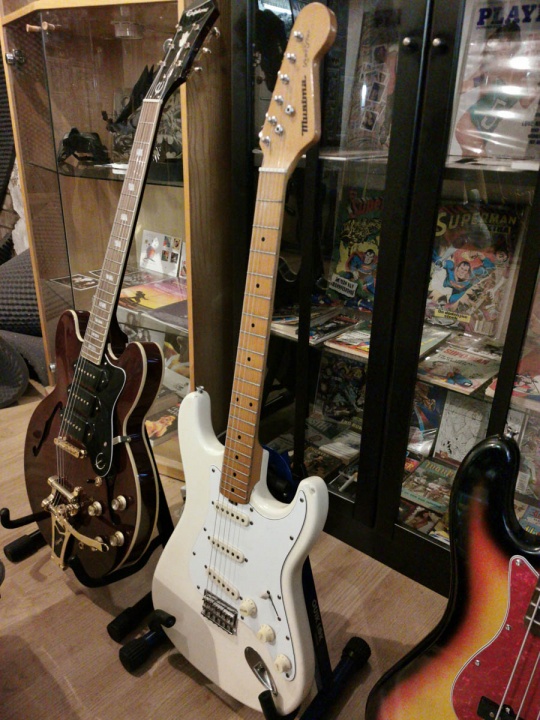A guitar mystery
Ok now this is of course a photography blog, but sometimes I also show some stuff that is not photography related and today is such a day, so if you’re not into guitars and mysteries…. move along, the blog will be here next week with some photography tips….. if you are interested in a little bit of a mystery and some info on how a guitar is build, make sure to read on.
Ok let’s start at the beginning.
I love guitars, have been loving them my whole life (started playing when I was 18), and although I had a big pauze of 17 years I always had a special place in my heart for those six strings axes. But I’m not someone that walks into a store and buy a new guitar, somehow they don’t do it for me, it feels… well new…. it misses some soul. Now this sounds weird maybe but trust me when you ever played a really good vintage guitar you know what I mean, they just push you more towards creativity, it’s a bit like taking images with old vintage lenses, it just makes your mind work differently.
My main passion is vintage Ibanez and Fender guitars.
Well let me rephrase that, I would love to be able to afford a vintage Fender stratocaster from the 60s or even 70s-80s.
In my collection you can find one 1992 Jem777 Black/Green and a 96 USA Malmsteen strat in Sonic Blue in absolutely new condition (I’ve owned it almost since new, and the previous owner didn’t play). Those two guitars are absolutely delights to play and feel and play totally different from the modern guitars, but ….. in all fairness those guitars are worth a pretty penny, in fact I was stunned by the value of the Malmsteen strat which was worth almost nothing when I tried to sell it in the early 2000’s and now it’s…. well worth a lot more let me put it that way, I can’t really compare it to anything else because it’s like new and all the other ones online are sold with roadwear.
Anyway, I love vintage guitars.
Now one might think…. oh that’s expensive.
And well if you buy USA strats from Fender it is, but there are so many hidden gems out there that owning vintage guitars can in fact be a lot of fun for a low budget, in fact some vintage guitars you buy for 100-300 euros and are in my opinion better instruments that a modern guitar that price by a FAR margin. Plus with vintage guitars you almost always get your money back when you sell, if you buy smart of course. Same goes for tube amps by the way.
Now how do I find those gems?
Well I mostly look on the Dutch Marktplaats (local E-bay) and facebook and I visit a site called CataWiki a lot. This last one is an auction site where they almost weekly sell guitars, sfx pedals, studio gear, mics and comics (yeah that other passion), now you see a lot of junk guitars and gear but sometimes there is something that catches my eye, and this how this story starts.
The Musima Lead star
While browsing CataWiki I found a listing for a very special guitar, which did ring some alarm bells.
For Sale : 60’s strat style Musima
Build date : 1961
Complete overhaul and checkup including electronics and cleaning.
Also in the description several times the date 1961 was mentioned.
Now in all fairness, I always do some research but at that moment I couldn’t really find anything from that guitar, all the lead stars I found online were from the 80’s and had a different bridge and different headstock logo. Now it’s not uncommon to find different guitars online that really are special, and seeing I couldn’t really find any information of a hardtail (fixed bridge) musima and it also noted that it was a very rare and 1961 build stratocaster I decided to take a challenge and started bidding. Long story short we ended up at 213.00 euros including shipping.
At that moment I already had more doubts, after looking in some other places I did find out some information about Musima. In short Musima is an East German company that had a pretty good reputation for building stratocaster copies. In fact they smuggled USA strats into the country and used X-ray machines to see how they made the neck (found out the trustrod). Now in the 60’s they did make guitars already so that’s why I was a bit confused by why I couldn’t find any lead stars in that period, and by now I’d found several articles claiming the lead star series started in 1984 and would no way be possible to be from 1961. Well that sucks… the auction site has an expert, the listing claimed 60’s strat (which doesn’t mean anything expect it’s based on a 60’s strat, but could also be build in 2019) and a clear build date of 1961…. and that last one was totally wrong (we think/know).
Also when the guitar came in it was a disaster.
I don’t know who did the complete overhaul but it’s a mess. Action and intonation where miles off, volume pod crackles and tone pod is fixed in a way that I would not do it (and I’m far from an expert guitarbuilder). Also the guitar was in much worse shape than shown on the images from the listing. It took me 2 hours to get it totally playable and in working order. Luckily for me the seller saw his mistake and refunded me 100.00 euros, making the total price of the guitar 113.00 which from what I see online is fitting for a lead star from that era…. however I wouldn’t be writing a post like this if there was not something weird about this one right?
Well yeah, there are some really weird things.
At first I didn’t give a lot of attention to certain things but I did put images online on a large facebook group, and this stirred up some comments and eventually that led me to a soviet guitar forum on which I also posted some images and got some good advise, this is also part of why I make this blogpost because we had to take the guitar apart and photograph the insides to see what the hecks going on with this Lead Star…. is it even a lead star ? Is it even a Musima?
Partscaster
One of the things you have to VERY careful for when buying a vintage (or any) strat is the fact that all the parts belong to that strat or time era. When you look at a Gibson Les Paul this is pretty much an easier job seeing the neck and body are connected and you can’t just replace the neck easily. With a strat this is a completely different story, the guitar was designed to be 100% modulair, in other words, everything can be taken off and replaced. So one could end up paying 10K for a 1960 neck with a body that is worth nothing and pickups that are from a chinese fake strat. Or even for a vintage looking neck where they removed a Squier logo and placed a Fender logo on.
Seeing the prices people pay for vintage instruments this is something that you will see a LOT.
For me, the guitar has to be as close to original as possible, unless of course the price is adjusted for that.
Now there is a chance my Musima is indeed not a Musima but a so called partscaster. In all honesty I don’t think so because why would someone on a Musima go to all the trouble to change the body (neck is clearly a musima I guess, doesn’t make any sense to put Musima stickers on a neck).
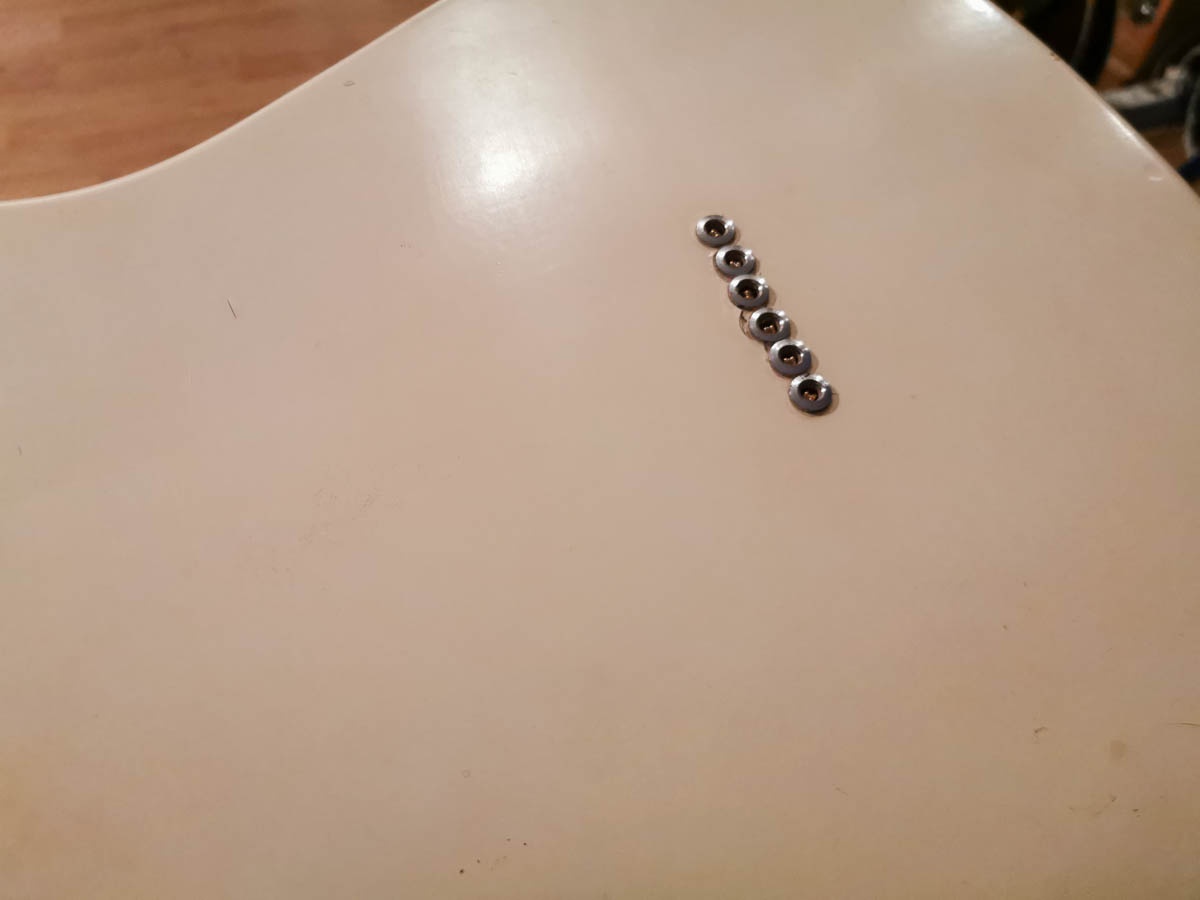
First the bridge
First thing that someone noticed, and that actually also got my attention and made me buy it anyway, is the bridge. All the musima’s he knew off (and this was later confirmed by some other guys) were delivered with a tremelo bridge and a hardtail/fixed bridge like mine was according to them never made by musima. Of course it’s possible that someone closed the gap from the tremelo, replaced the tremelo for a fixed bridge and did a complete paint and finish job on the guitar to make it look seamless, again… why do that on a Musima. Now don’t get me wrong it’s an awesome guitar but it’s not like an incredible expensive instrument that people would go to all that trouble, because that would have been an awesome job to be honest.
Now one could stop here and think….. ok well that’s a shame let’s enjoy it for what it is (a pretty cool playing/looking/sounding strat) but now I wanted to know more, because the story gets more interesting.
Serial numbers
Every guitar I have ever owned had a serial number, without serial number….. never knew it would be possible.
Well here we have one.
Normally the serial numbers are on the headstock, neckplate etc. but this guitar doesn’t have any, and it’s not removed, they are just not there. This did strike me as very odd until some congratulated me on owning a first batch lead star, it appeared that the first batch ever produced didn’t have any serial numbers. Ok that makes it even more interesting. Add to this that the neckplate where the serial indeed was supposed to be stamped in has a name on it which I can’t really make out, but it looks not done professionally
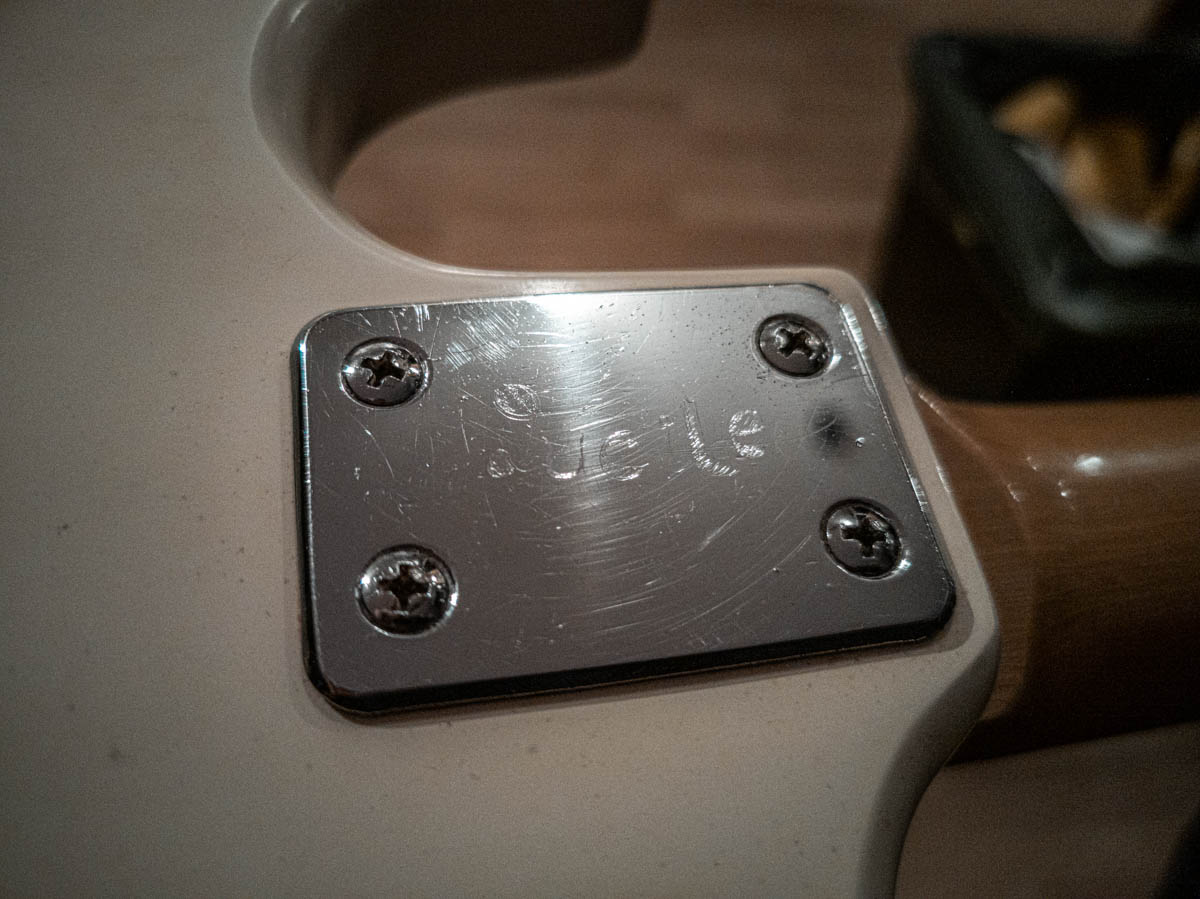
Now knowing that it was a first batch and seeing that “name” plus the fact there was no Musima with a fixed bridge made me very curious and I decided to take the guitar apart.
The Neck
On most necks you will find a date stamped, also the body itself is often marked in the neck cavity. This way you can see if a neck and body are indeed real and from the same year. Well no surprise here…… no serial numbers and ZERO markings. Is this consistent for a first run?
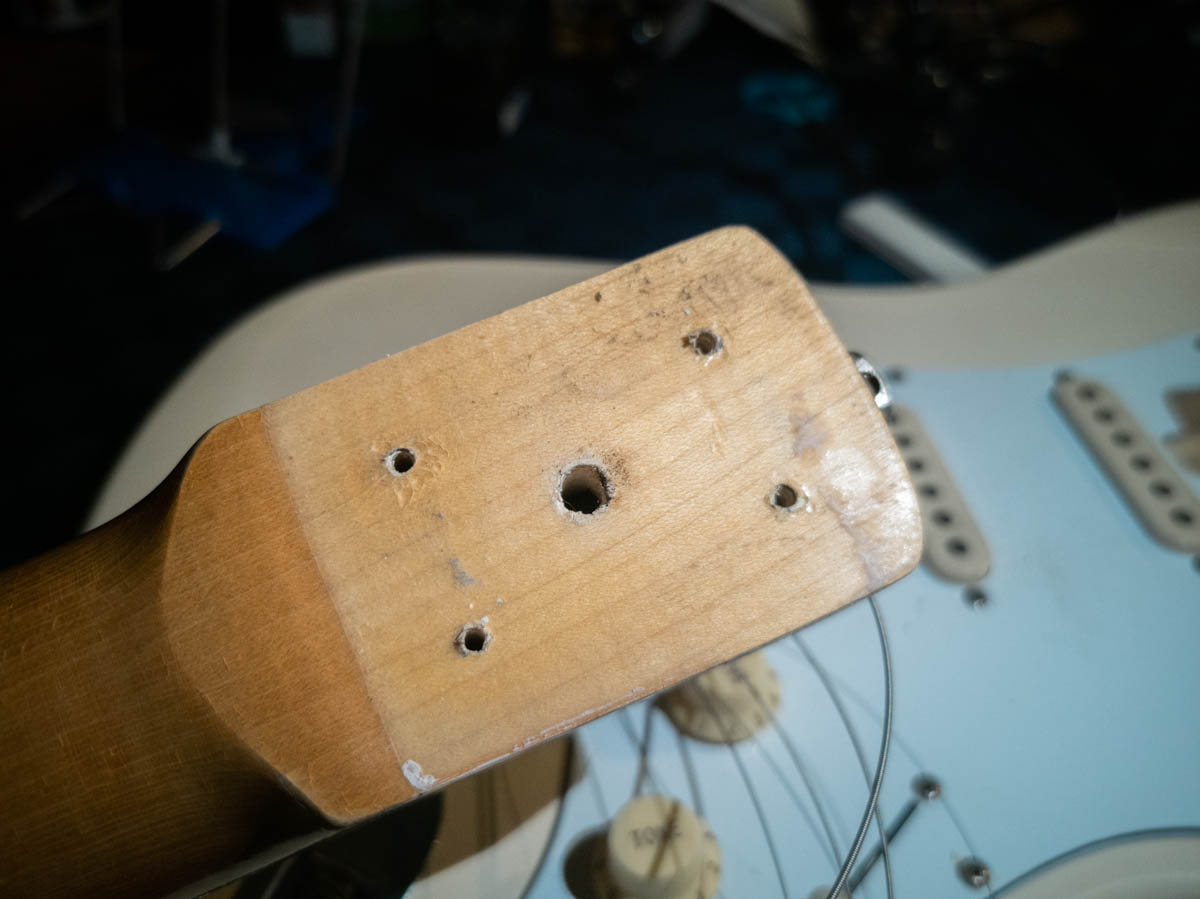
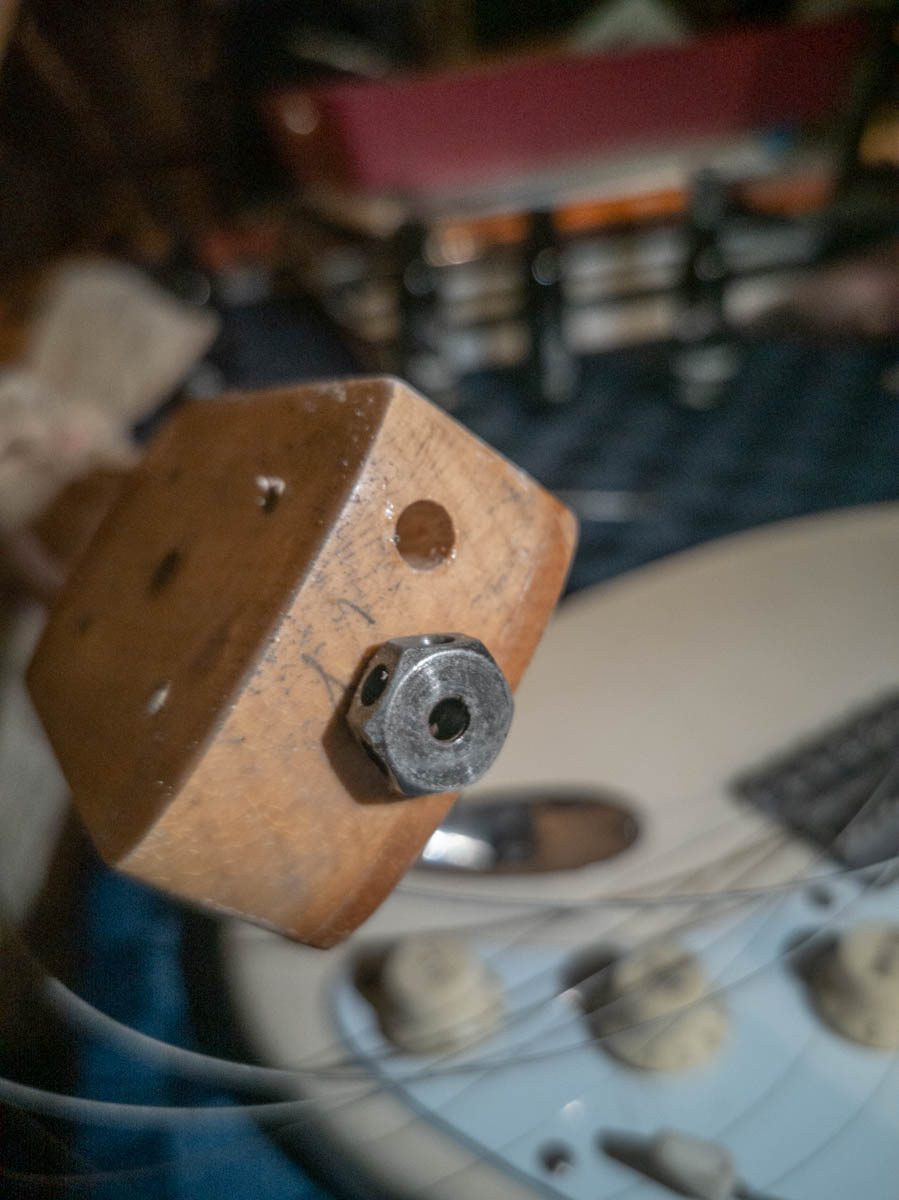
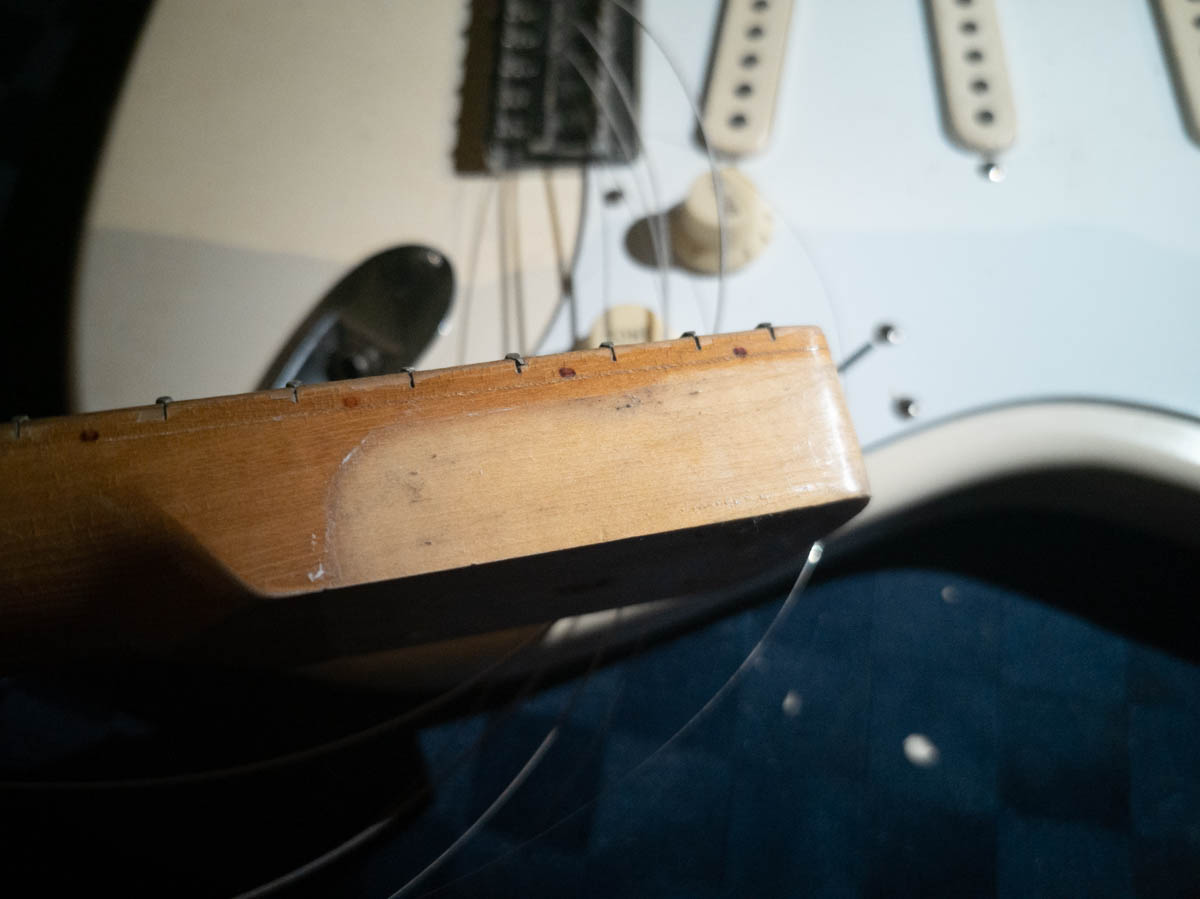
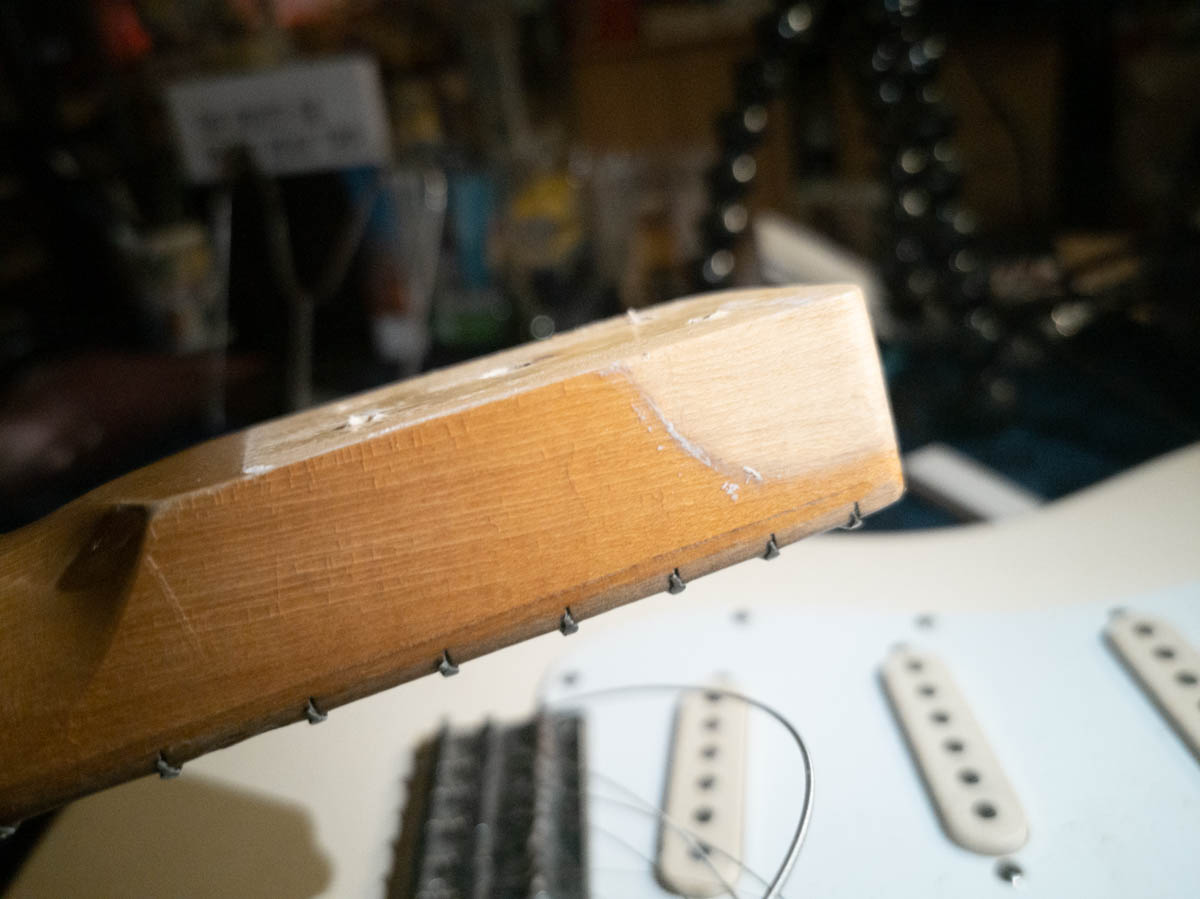
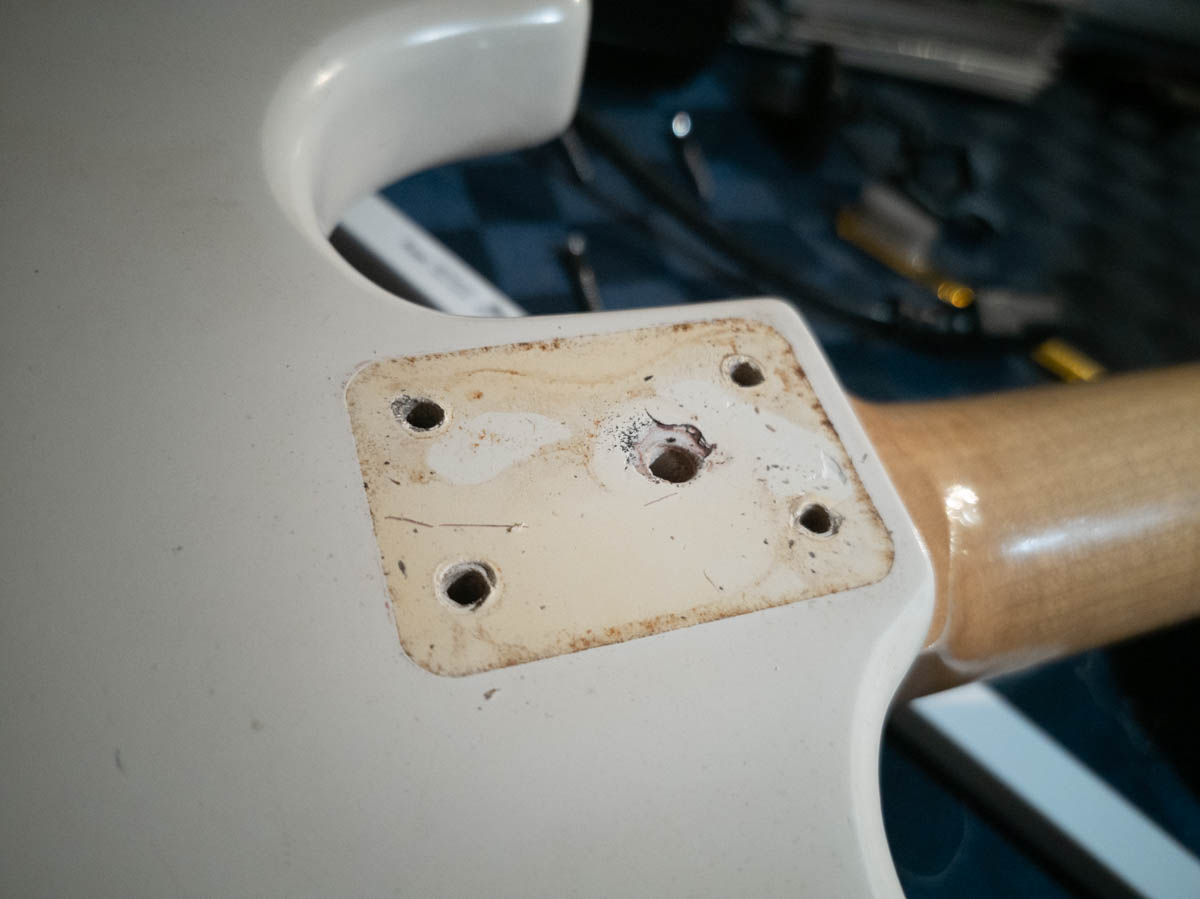
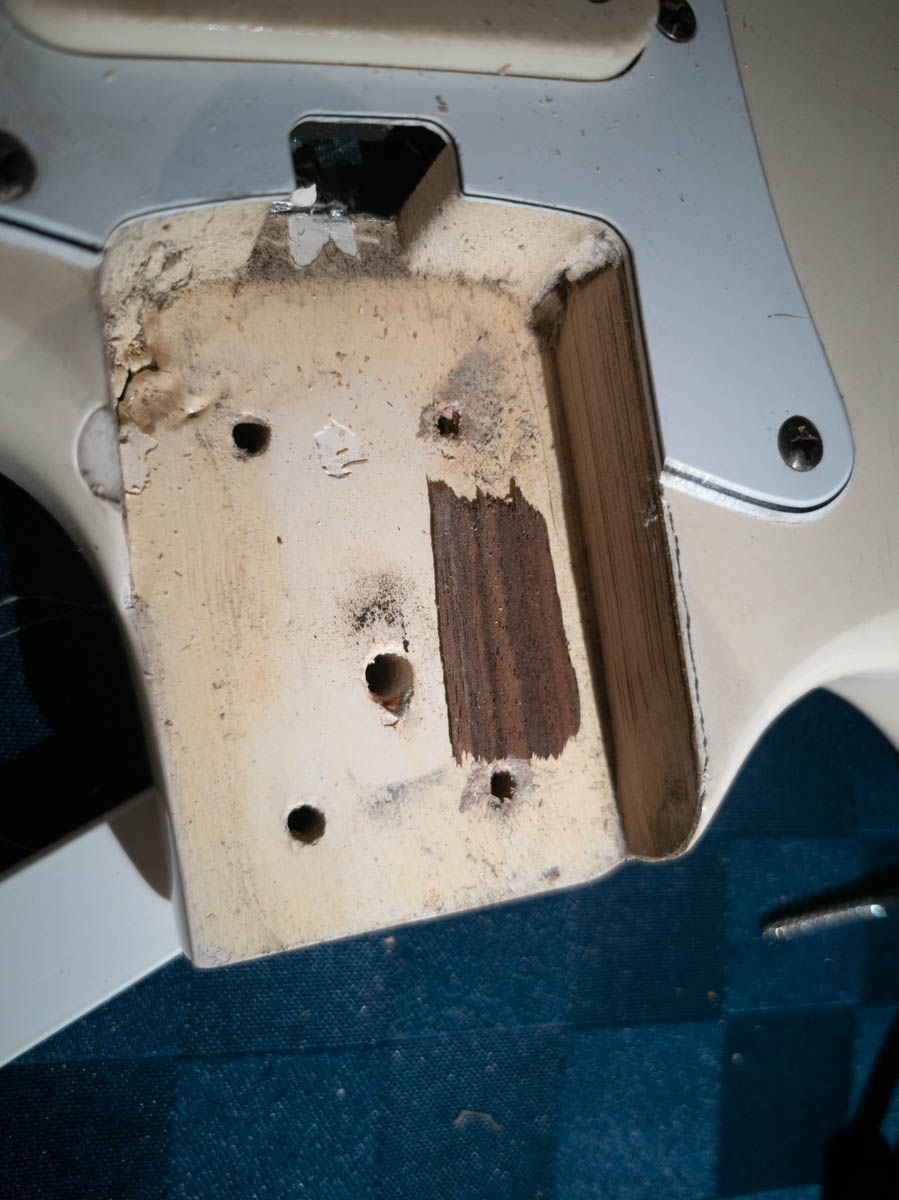
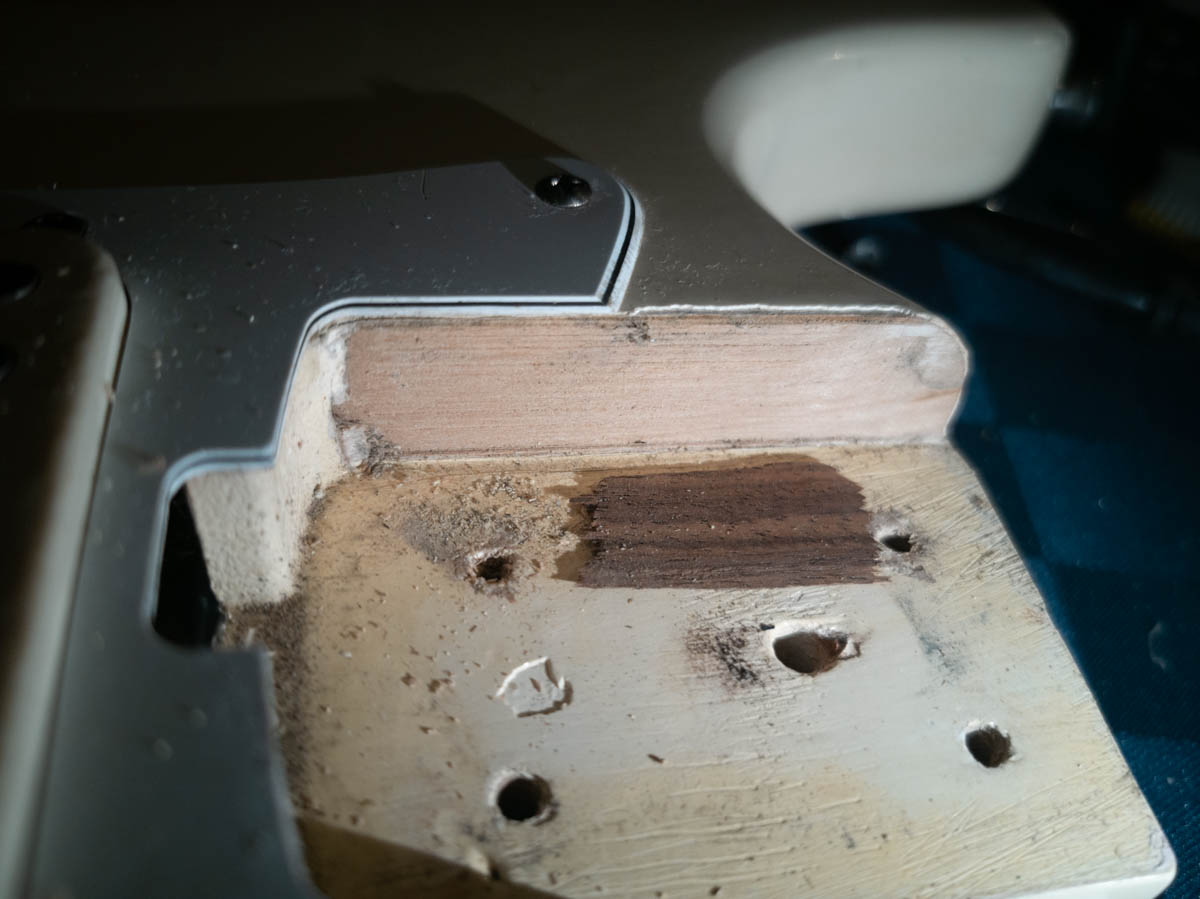
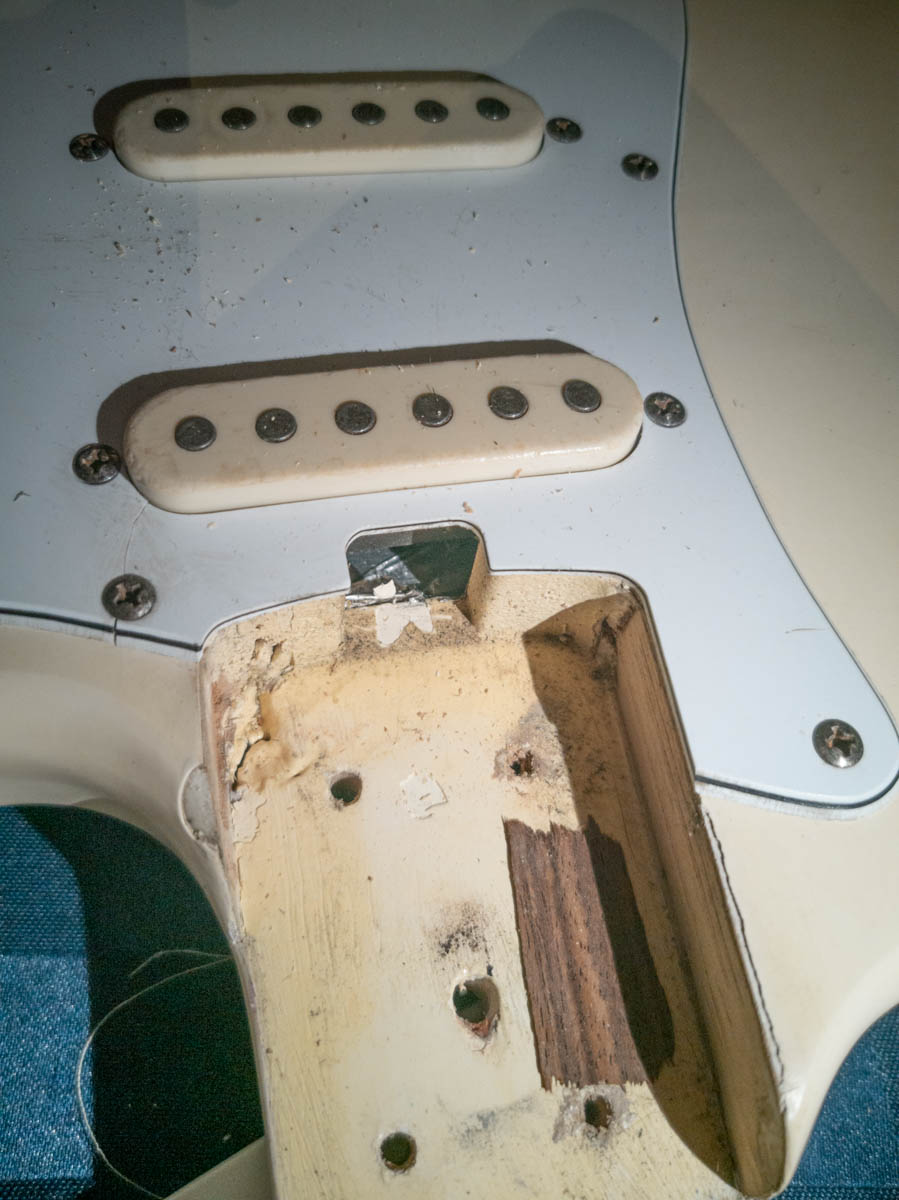
The body
Bodies can be made with different techniques. Now a days most bodies are made with a CNC machine, meaning you get perfect cutouts, when buying a REAL vintage strat (let’s say a 60’s) this is a dead give away if a guitar is fake, if they body is 100% perfect there is a huge chance the body is not a real 60’s but a CNC version from later on. I believe Fender started using CNC bodies in the mid 70’s. Seeing this Musima could very well be from the 1984 (earliest run as far as I know now) I don’t have a clue if at that time the Musima factory had a CNC machine so I still took images of the inside but don’t know if it will help someone determining if this is a real Musima body. When you look closely you can see it’s not a perfect job which could mean it’s not a CNC body, which would normally date a vintage guitar from Fender in the early 70’s or earlier but with Musima I have no clue, so hopefully someone online knows.
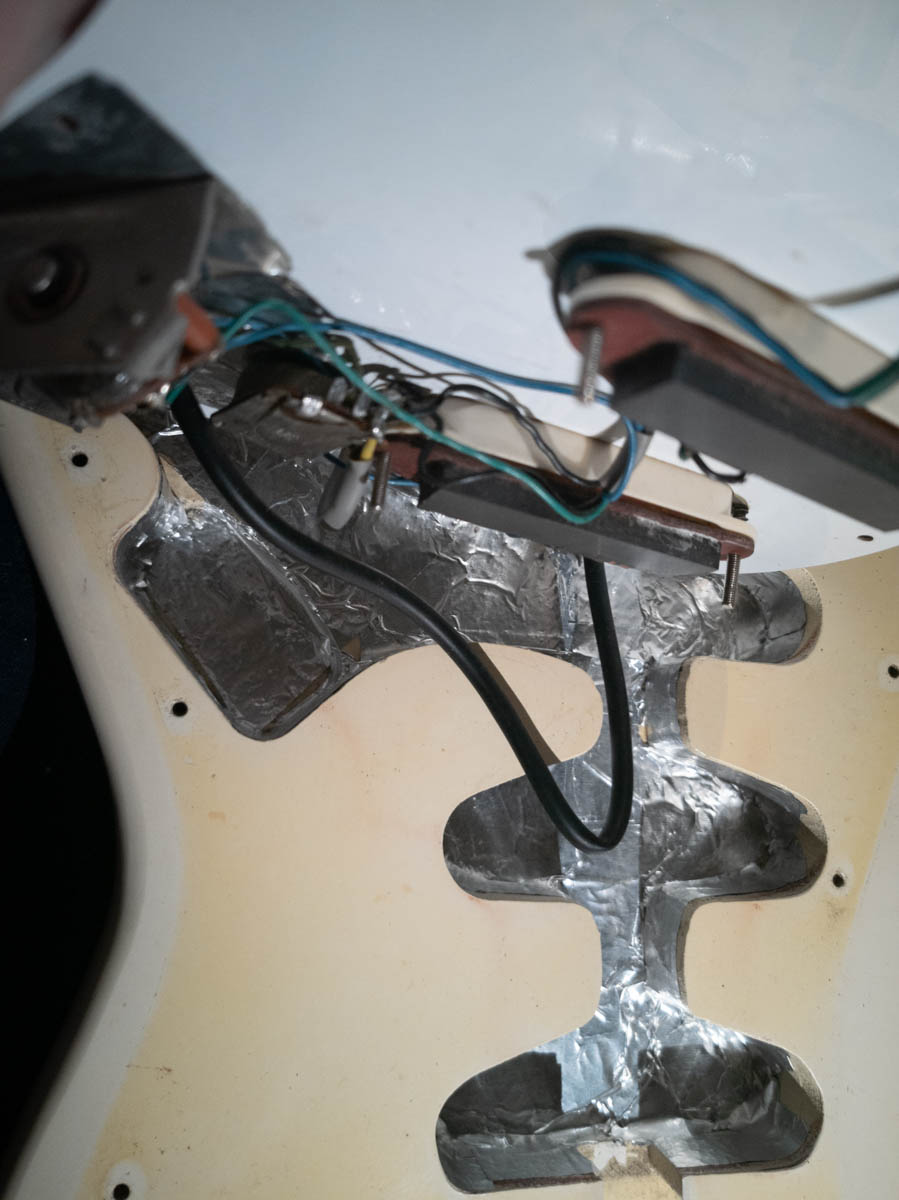
Electronics
The other thing that is vital, and determines the sound of a guitar A LOT is the electronics. Now some people are wood worshippers and claim that a rosewood vs maple discussion is useless because there is a huge difference, other people claim that if the wood of the neck and body vibrate at the same frequency they hear it, and there is even a story about a famous guitar player who was upset because his roadie put the screws of the tremelo cap in in the wrong order and he just couldn’t get his sound back.
Let me put it this way, I think electronics make up 80-90% of the sound of a guitar, the rest is wood. Also depending on what pickups, I think that with active pickups probably 99% of the sound is the pickups. Anyway let’s stay on topic. Here are the electronics.
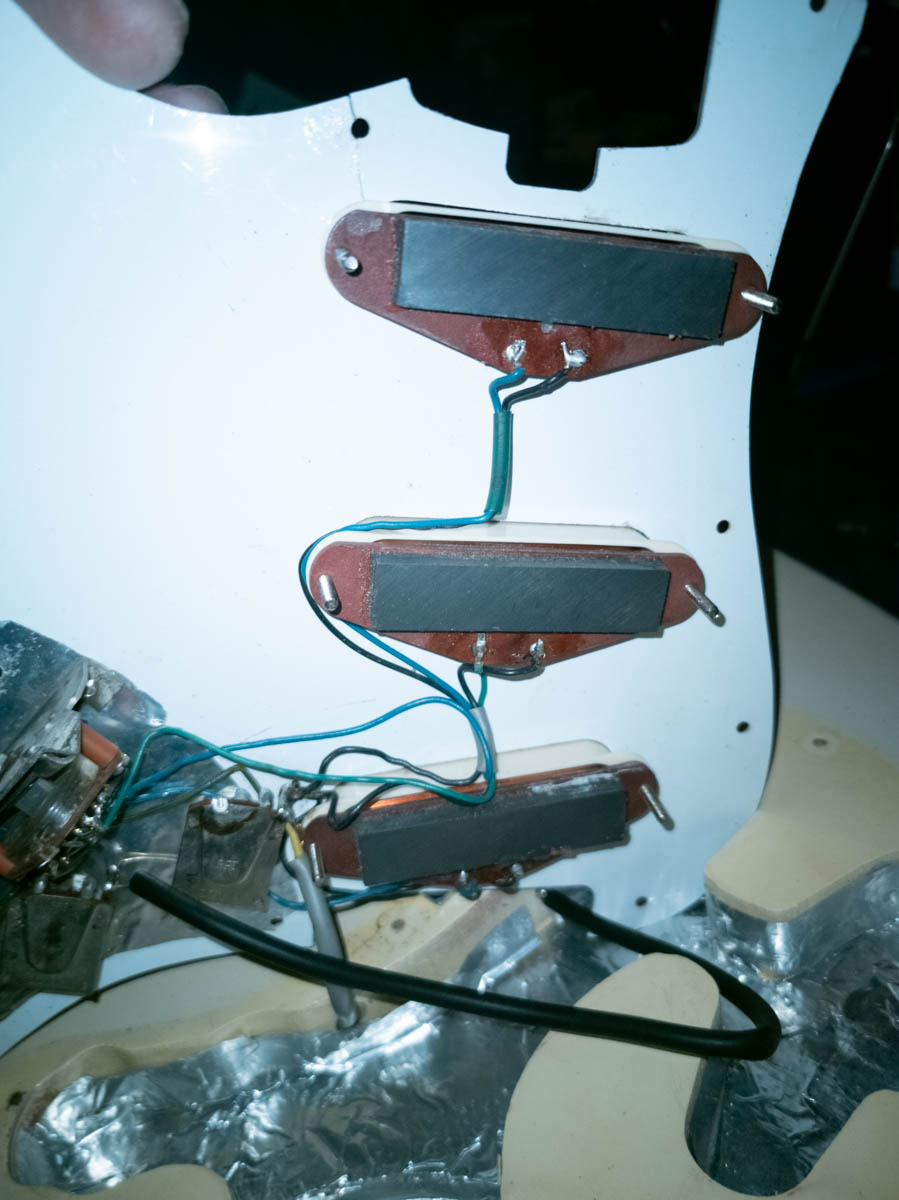
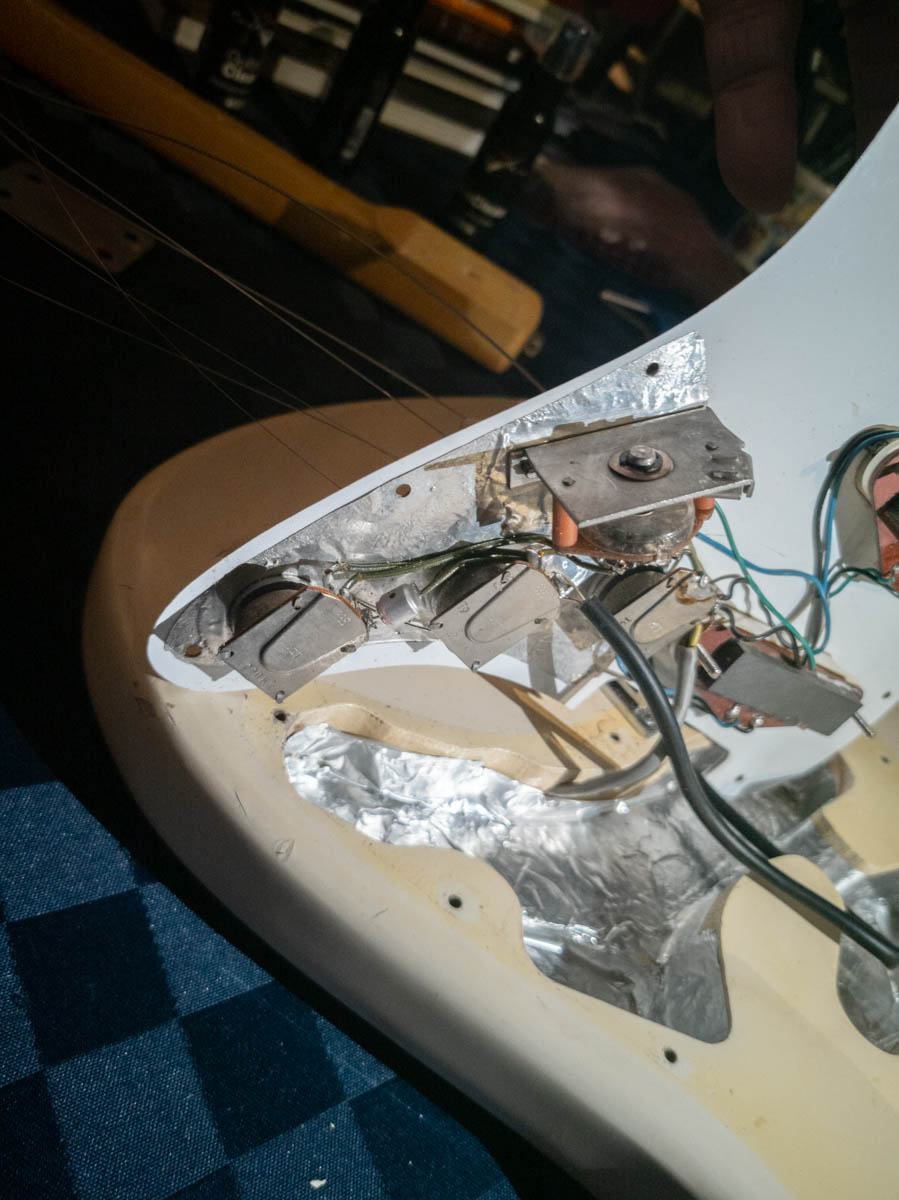

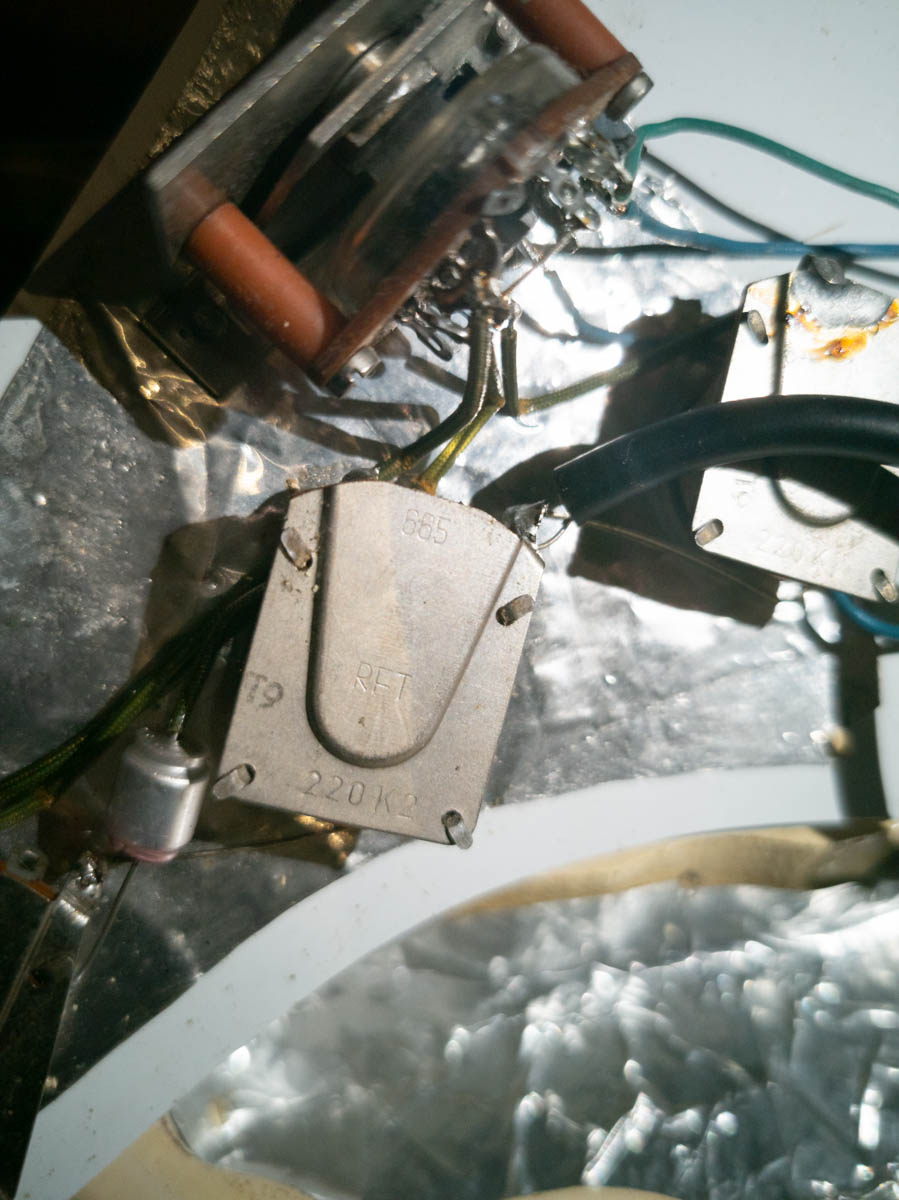
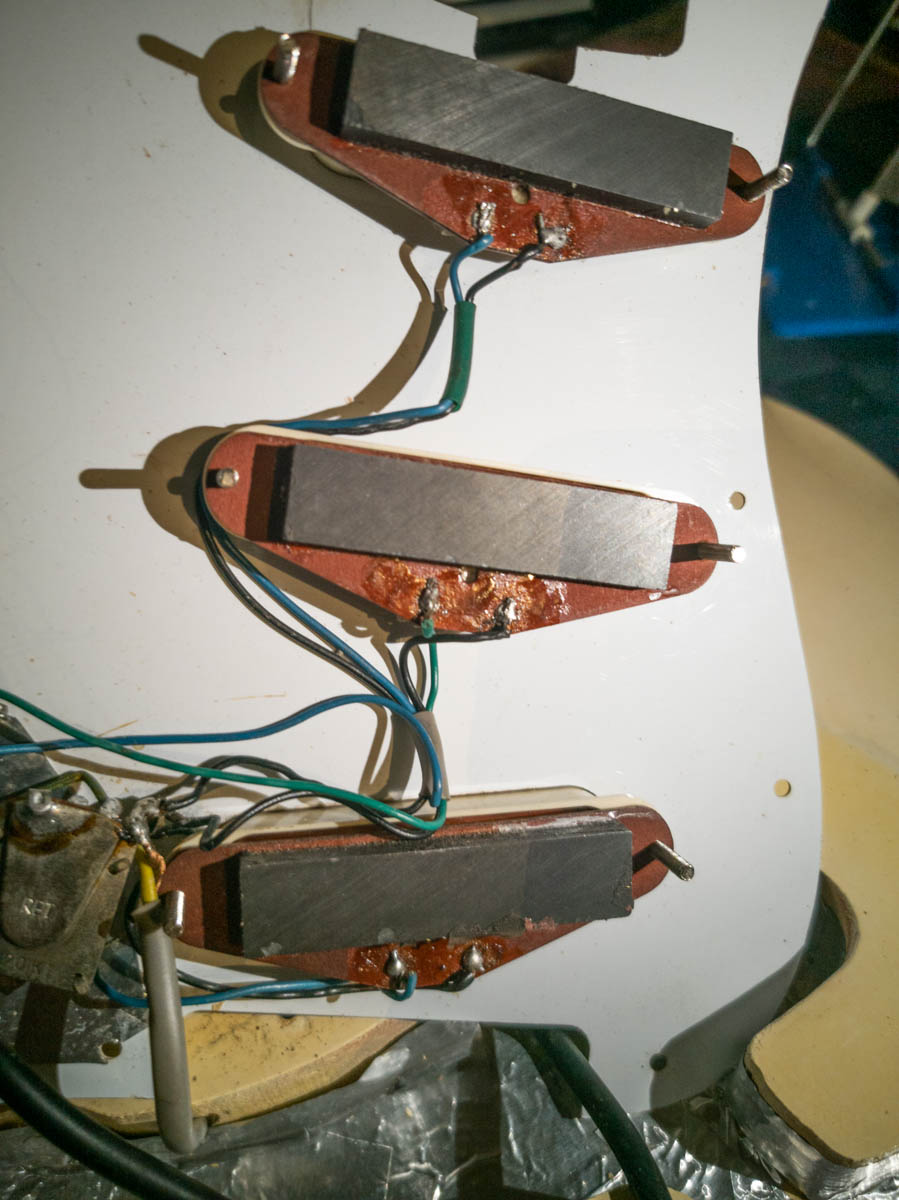
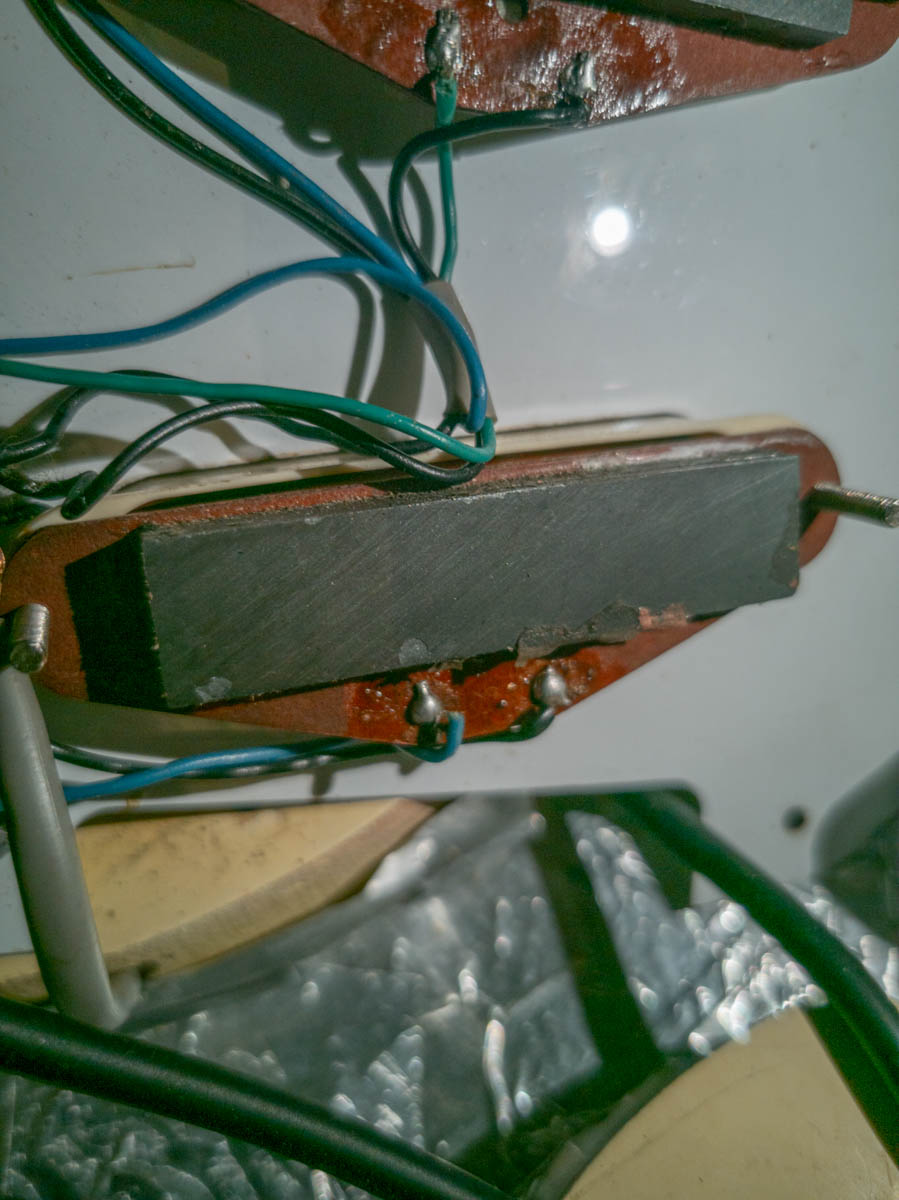
As you can see it does look old, but that’s about as far as my knowledge goes for pods and electronics.
The pickups are I think Ceramic which can mean cheap, but doesn’t have to be, there are loads of people that actually like the Ceramic in high-end pickups, often the pickups are a bit hotter than the alnico pickups. Personally I have no clue what should be in here originally but I think this could very well be it.
Overal first ideas
Now of course I would love to have bought a real unique gem of a original guitar. But I think we have two options.
- This is an unique 100% Musima guitar that was build as a prototype (maybe even far before 1984) maybe was given to someone as a gift (hence the name and missing serial numbers on every single part) and was later put into production. This would not surprise me to be honest seeing that I have never ever had a guitar that had no markings whatsoever on any of the parts, there is always something somewhere.
- This is an unique partscaster, maybe an original neck, maybe a body from another stratlike copy, maybe different hardware, really no idea.
The thing for me that sounds like a fantasy but could very well be true is number 1, the thing that bugs me the most is that it all looks legit for me as fully unaware of how a real Musima should look. Being a proto type could clarify the lack of any markings PLUS the fact that the bridge is fixed, maybe they didn’t figure out how to attach the tremelo yet… no clue to be honest.
I’m posting this on several vintage groups and will keep adding information to the piece as the mystery unfolds, and let’s hope it’s not a dissaster story…. although in all honesty the guitar really surprised me for it’s feel and sound, it is truely a “beast” and sounds like what I know of a vintage strat (although that’s not fair seeing every vintage guitar sounds and feels different) but let me put it this way, it doesn’t feel like a junk guitar like some older squiers or other copies which are… well really bad.
Ok hope you enjoyed this little side step and again, don’t worry we are still all about photography, well ok 99% 😀
Update 1
We now found at least one other hardtail musima so perhaps it was a very limited run based on the fact several people told me they never saw one, but it’s not unique.
The other update is that according to a user on sovietguitars the electronics and body match musima so we can now I guess say it’s a real musima
and maybe not as rare as we hoped perhaps although it still is a first batch lead stars with an option that wasn’t produced a lot.

